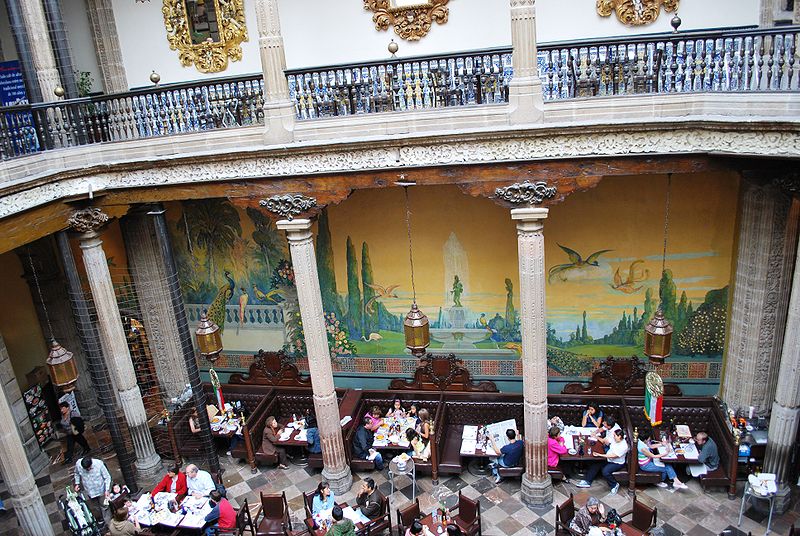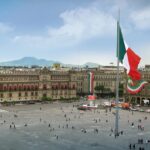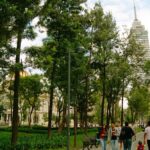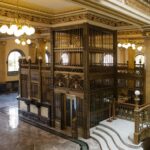The Casa de los Azulejos, literally the “House of the Tiles” is one of Mexico City’s most dramatic and beautiful 18th-century residential palaces. And most fortunately, as it has been inhabited by Sanborns restaurant and department store since 1919, it’s also open to the public. Or at least, a very generous amount of it is easily view-able. For the uninitiated, Sanborns prices are also very reasonable and breakfast, lunch, or dinner here is probably something everyone should do at least once in a lifetime.
The remarkable palace’s address is actually the tiny Callejón de la Condesa, which runs just between 5 de Mayo and pedestrian-only Calle Madero. It’s been one of the most important streets in the city since at least the 16th century.
Although an earlier Count del Valle de Orizaba owned the property with two houses on it earlier, the current building was begun in 1793. Remodeled sometime later, the addition of the blue and white tiles from Puebla was a sensation right from the beginning. Inside there are two noteworthy artworks. A peacock mural by the Romanian painter, Pacologue dating from 1919.

Perhaps even more beloved, one of José Clemente Orozco’s earliest works is in the stairwell. “Omniscience” was painted in 1925. And that’s just the painting. Inside and outside, visitors find a wealth of things to take in.
The Sanborns brothers from California opened their first soda fountain and drugstore on then-Calle Filomeno Mata (today it’s Calle Tacuba). They expanded to the Casa de Azulejos just a few years later. They took two years to remodel it, putting a stained-glass roof over the main courtyard, and continued expanding. Today, there are 125 Sanborns restaurants with the full attached department store and some 34 Sanborns Cafés. This particular restaurant was considered quite the elegant dining establishment for most of the first half of the 20th century, but today, you’ll find it comfortable and a pleasant excuse for taking in one of Mexico City’s true historical treasures.

There's no center like the very center, and in Mexico City, that means el Zócalo!

Bellas Artes has long been an iconic symbol of Mexico City's culture, artistry, and the performance arts.

A most charming geometrically laid-out park in the center of Mexico City...

One of the leading contemporary art spaces in the City, the LAA brings the cutting edge to the Alameda.

The Postal Palace, the Palacio Postal, is a remarkable building that's a must see on any walking tour of Centro.